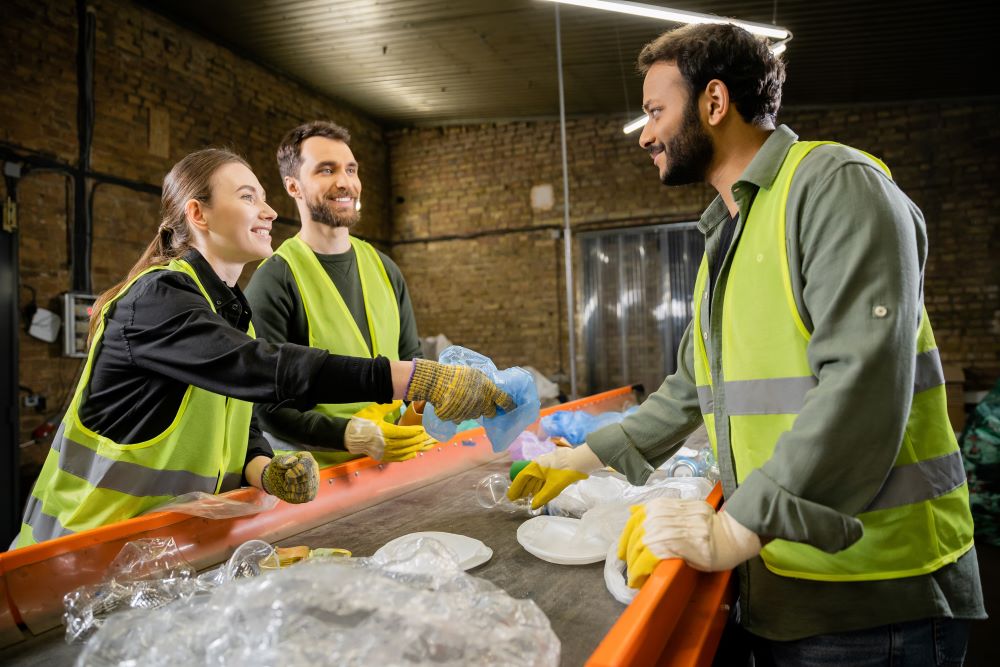The notion of a circular economy is not merely an environmentalist’s buzzword but a radical rethinking of our consumption and waste management patterns necessary to meet the twin challenges of climate change and resource scarcity. The European Union, in the vanguard of this shift, is poised to reinforce regulations and industrial practices that promote a circular economy, with a particular focus on redefining the lifecycle of materials from start to finish. The EU’s Circular Economy Action Plan, first introduced in 2020, is expected to culminate in 2024 with an ambitious strategy targeting packaging and packaging waste to enhance reuse and recycling efforts. But Europe isn’t the only place where the circular economy is taking root. Innovations from across different sectors are showcasing the potential and practicality of this approach.
A Beacon of Hope: The Pivotal Role of Research and Development
Unveiling a more circular approach is underpinned by robust research and development efforts, which are crucial in redesigning products and materials to be restorative and regenerative, aiming to keep products, components, and materials at their highest utility and value at all times. The EU’s Project COMBI is a standout, combining innovative approaches like environmental footprinting and lifecycle assessment tools. In the UK, the Oxford Martin Programme on the Future of Plastics is pioneering plastic recycling methods that are not only ecologically sound but also economically viable, prescribing a target of 95% material recovery.
Breaking the plastics down to monomers that can be reused, as demonstrated by scientists at King’s College London, illuminates a path towards a plastic-neutral world, where single-use plastics cease to be a menace but transform into a resource. This enzymatic approach not only offers a promise of decontaminating our environment but also reconsiders the temporal qualities of ‘disposable’ items, turning them into a perpetually reusable asset.
The Circular Revolution in Fashion and Design
The fashion industry, notorious for its linear ‘take, make, dispose’ model, is undergoing a transformation driven by circular economy principles. With concerns about the industry’s environmental impact growing, the Circular Fashion Initiative launched a set of common metrics to measure circularity and sustainability across the fashion sector. This unified framework paves the way for a coordinated effort to manage waste, decrease pollution, and extend the life of materials.
Evidence of positive change is clear in the sector, with leaders like Pandora, who have shifted exclusively to recycled metals, demonstrating that a circular business model can be both profitable and beneficial for the environment. Their proactive approach eliminates the carbon footprint of mined materials and sets the stage for responsible sourcing practices that have the potential to become the industry standard.

The Circular Revolution in Fashion and Design
Buildings of the Future: Sustainable Construction Through the Circular Lens
As urbanization accelerates, so does the need for sustainable construction methods. The traditional building process is laden with inefficiencies: substantial material waste, long transportation distances, and often the lack of a clear recycling path for used materials. In contrast, offsite manufacturing offers a blueprint for sustainable construction, significantly reducing waste and energy use while streamlining the recycling process. By focusing on the entire lifecycle of construction materials, from production through to assembly, and finally to deconstruction and repurposing, the urban landscape can evolve into a network of dynamic and responsive spaces.
The potential impact in regards to carbon emissions is profound. A report from McKinsey and the World Economic Forum posits that, if integrated fully, circular practices could reduce emissions in the construction sector by a staggering 75% by 2050. These monumental reductions not only underscore the environmental benefits but also forecast substantial economic gains, potentially amounting to $360 billion in net profits by 2050, illustrating the robust business case for circular practices.
Embracing the Circular Economy: Challenges and Path Forward
Despite the promising strides, the journey towards a circular economy is not without challenges. Transitioning to circular models requires substantial investments in technology, infrastructure, and education, while conventional linear approaches remain deeply entrenched. Nuturing international collaboration and public-private partnerships will be vital in navigating this transition gracefully.
Moreover, embracing a circular economy demands rethinking our concept of value. Emphasizing the utility and durability of products over the traditional notions of volume and turnover is a paradigm shift for businesses and consumers alike. Yet, this shift is indispensable in cultivating a society that is conscious of its waste and resource footprints.
As enterprises and governments across the globe take on the mantle of circularity, consumers and workers find themselves at the heart of this transformation. By integrating circular practices into our daily lives, from buying sustainably-sourced products to rigorously recycling everyday materials, we reinforce the circular vision with tangible actions. Each of us, in our choices and behaviours, plays a crucial role in reshaping our economy towards one that is regenerative, equitable, and resilient.
In Conclusion: The Invariably Circular Path Ahead
The circular economy is not just an ideology; it’s a narrative by which we can rewrite the relationship between humans and the natural world. Its principles offer a vision of a future where resources are not squandered but managed respectfully and strategically. The EU’s robust policies and global initiatives underscore not just the possibility but the necessity of embracing the circular economy for our planet’s health and our own future.
We stand at a crossroads, where the choices we make today can set the trajectory for generations to come. As we navigate this critical juncture, the circular economy stands out as an unassailable path, guiding us towards a world of abundance without excess, consumption without waste, and growth without compromise. Let us seize the opportunities it presents and pledge to participate in building a sustainable tomorrow, today. Only by working together can we create a truly circular society and pave the way for a better, more prosperous future for all. So let us join hands and take this invariably circular path ahead towards a world that is greener, cleaner, and more resilient than ever before. Whether we are consumers, workers, entrepreneurs, or policymakers, let us embrace the principles of the circular







